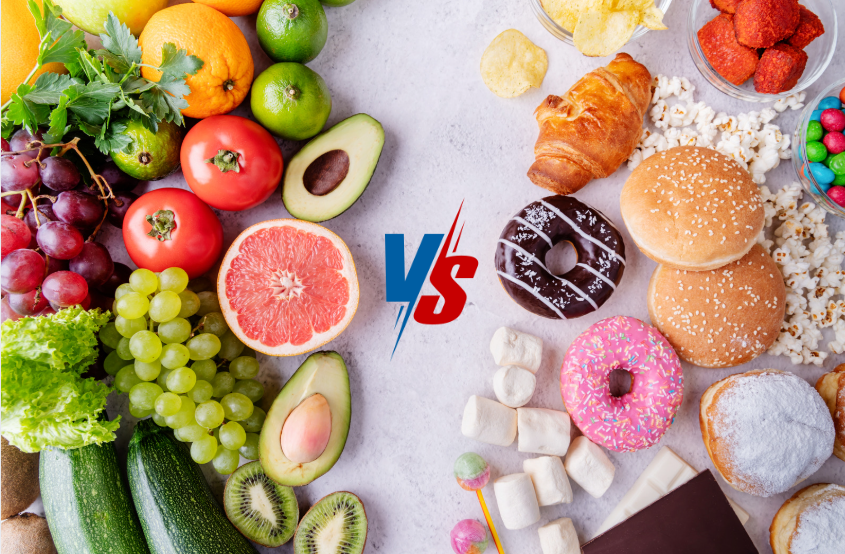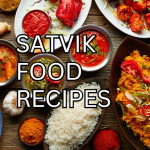Healthy food and unhealthy food chart helps individuals make informed dietary choices by categorizing foods based on their nutritional value. Healthy foods include fruits, vegetables, whole grains, lean proteins, and healthy fats, which provide essential nutrients without excessive calories. Regular consumption of these foods leads to better physical health, improved mood, and increased energy.
In contrast, unhealthy foods are often high in calories, sugar, unhealthy fats, and sodium, with little nutritional value. Examples include sugary snacks, processed foods, fast food, and sugary drinks. Frequent consumption can lead to obesity, diabetes, heart disease, and other chronic conditions.
A typical healthy food and unhealthy food chart visually represents different food groups and their classifications. It highlights nutrient-rich foods like fruits and vegetables and contrasts them with high-calorie, high-sugar options like fast food. The chart serves as a quick reference for making healthier eating choices.
Additionally, these charts may provide guidelines for balanced eating, such as consuming a variety of fruits and vegetables daily, opting for whole grains, choosing lean protein sources, and incorporating healthy fats like avocados and nuts. They also advise limiting processed foods, sugary snacks, and high-fat, high-sodium items.
The goal of a healthy food and unhealthy food chart is to educate individuals on making informed dietary decisions. By understanding the differences between healthy and unhealthy foods, people can improve their overall health and well-being. Gradual changes in one’s diet can lead to significant long-term benefits, including reduced chronic disease risk, better weight management, and enhanced quality of life.
So ,let’s discuss 10 Healthy Food and Unhealthy Food Charts :
| Chart Topic | Healthy Food | Unhealthy Food |
|---|---|---|
| Nutrient Density | Leafy greens, berries, lean proteins | Processed foods, sugary snacks |
| Rich in vitamins, minerals, antioxidants | Low in essential nutrients | |
| Glycemic Index | Whole grains, legumes | White bread, sugary cereals |
| Low-GI foods for stable energy | High-GI foods cause blood sugar spikes | |
| Saturated Fats vs. Unsaturated Fats | Avocados, nuts, olive oil | Red meat, full-fat dairy products |
| Unsaturated fats support heart health | Saturated fats raise cholesterol levels | |
| Added Sugars | Natural fruits, whole foods | Soda, candy, baked goods |
| Low in added sugars | High in added sugars | |
| Fiber Content | Whole grains, fruits, vegetables | Refined grains, processed snacks |
| High-fiber for digestive health | Low-fiber can cause digestive issues | |
| Protein Quality | Lean meats, fish, eggs, quinoa, tofu | Processed meats, low-quality protein sources |
| Complete proteins with essential amino acids | Incomplete proteins | |
| Sodium Levels | Fresh fruits, vegetables, whole grains | Processed and fast foods |
| Low-sodium options | High in sodium, risk of hypertension | |
| Portion Sizes | Recommended portion sizes for various foods | Overeating leads to weight gain |
| Balanced portions | Understanding portion control | |
| Artificial Ingredients | Natural, whole foods | Processed foods with preservatives, colorings |
| Minimally processed | Artificial ingredients cause health issues | |
| Hydration | Water, herbal teas, coconut water | Sugary drinks, caffeinated beverages |
| Hydration benefits | Dehydration and health issues |
1.Nutrient Density:
-
- Healthy Foods: Think leafy greens, berries, and lean proteins. These are packed with vitamins, minerals, and antioxidants. Basically, they give you a lot of nutrients without a ton of calories.
- Unhealthy Foods: Processed foods and sugary snacks. They might taste good, but they’re low in essential nutrients and high in empty calories. Avoid these to keep your diet nutrient-rich.
2.Glycemic Index (GI):
-
- Healthy Foods: Whole grains and legumes. They have a low GI, meaning they provide stable energy without causing rapid blood sugar spikes.
- Unhealthy Foods: White bread and sugary cereals. These have a high GI and can cause quick spikes and crashes in blood sugar levels. Not great for your energy levels!
3.Saturated Fats vs. Unsaturated Fats:
-
- Healthy Foods: Avocados, nuts, and olive oil. These contain unsaturated fats, which are good for your heart.
- Unhealthy Foods: Red meat and full-fat dairy products. They’re high in saturated fats, which can raise cholesterol levels and increase the risk of heart disease.
4.Added Sugars:
-
- Healthy Foods: Natural fruits and whole foods. They’re low in added sugars and are much better for your health.
- Unhealthy Foods: Soda, candy, and baked goods. These are loaded with added sugars, leading to weight gain and other health issues. Best to steer clear!
5.Fiber Content:
-
- Healthy Foods: Whole grains, fruits, and vegetables. High in fiber, which is great for digestive health and preventing chronic diseases.
- Unhealthy Foods: Refined grains and processed snacks. Low in fiber, which can lead to digestive problems and poor health. Fiber is your friend, so load up on those veggies!
6.Protein Quality:
-
- Healthy Foods: Lean meats, fish, eggs, quinoa, and tofu. These are complete proteins with all essential amino acids, crucial for muscle growth and repair.
- Unhealthy Foods: Processed meats and low-quality protein sources. They often lack essential amino acids and aren’t the best for your health. Go for quality over quantity!
7.Sodium Levels:
-
- Healthy Foods: Fresh fruits, vegetables, and whole grains. They’re low in sodium, helping you maintain healthy blood pressure.
- Unhealthy Foods: Processed and fast foods. High in sodium, which can lead to high blood pressure and increased risk of heart disease. Keep an eye on your sodium intake!
8.Portion Sizes:
-
- Healthy Practice: Recommended portion sizes for various food groups. Eating balanced portions helps maintain a healthy diet and prevents overeating.
- Unhealthy Practice: Overeating, even healthy foods, can lead to weight gain and other health issues. Portion control is key!
9.Artificial Ingredients:
-
- Healthy Foods: Natural, whole foods. These are free from artificial ingredients and much better for your overall health.
- Unhealthy Foods: Processed foods with preservatives, colorings, and flavorings. These can cause health problems, so it’s best to avoid them.
10.Hydration:
-
- Healthy Drinks: Water, herbal teas, and coconut water. These are excellent for staying hydrated and supporting overall health.
- Unhealthy Drinks: Sugary drinks and caffeinated beverages. They can contribute to dehydration and other health issues. Stick to water for the best hydration!
In conclusion, understanding the differences between healthy and unhealthy foods is crucial for maintaining a balanced diet and overall well-being. By focusing on nutrient-dense, low-GI foods with healthy fats, high fiber, and quality protein sources, you can significantly improve your overall health. Reducing added sugars, sodium, and artificial ingredients, along with practicing portion control and staying hydrated, will help you achieve and maintain a healthy lifestyle.
Remember, balance and moderation are key. No food is entirely off-limits, but making informed choices can help you enjoy a variety of foods while prioritizing your health. Stay tuned for more tips and insights on living a balanced and healthy life!



Good https://is.gd/tpjNyL
Good https://shorturl.at/2breu
Very good https://shorturl.at/2breu
Very good https://lc.cx/xjXBQT
Very good https://lc.cx/xjXBQT
Good https://lc.cx/xjXBQT
Awesome https://lc.cx/xjXBQT
Very good https://lc.cx/xjXBQT
Awesome